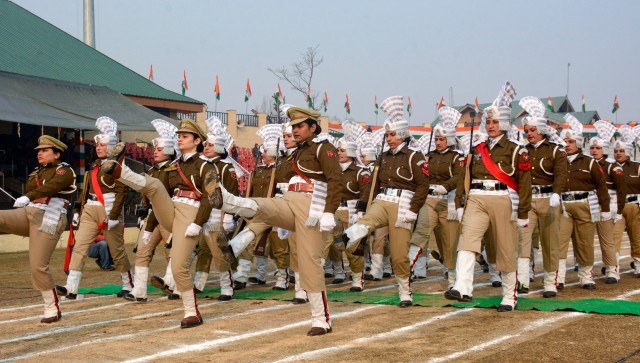It is a strong trait of a Mumbai resident. He does not walk on the footpath but prefers the space between a road’s carriageway and cars parked along the kerb. Because, the footpaths, where they exist, are unusable for a variety of reasons.
He counts the odds of an injury by accident with a passing vehicle lower than the inconvenience of using a footpath. The inconveniences are many, some of which include too narrow footpaths, uneven paving, and encroachment by hawkers and the homeless.
The flower beds put up by businesses along the road to ensure that they are not taken over by hawkers and the homeless narrows the footpath even further, but it seems to have the municipal corporation’s consent because, apparently, they make the place at least look pretty.
And the ignominy is that the city has been told in detail all that it does wrong. “Over 100 international road experts got a first-hand experience as they navigated a 5-kilometre stretch on foot from Lower Parel to Worli and back early Thursday,” The Times of India reported .
“From obstructed footpaths and confusing road signs to a total absence of ramps for the wheelchair-bound, experts witnessed a dozen things wrong. But they said that the situation was not unsalvageable,” the report said. And it is here that the major doubt — even fear — lurks: would it be salvaged at all?
Over a decade and a half ago, Gopal Dukhande, a politician who tripped on a sidewalk because of bad paving, rushed into the Municipal Commissioner’s office and demanded if the man had ever travelled overseas and if he did, whether or not he walked on the (foreign) footpaths. The surprised official said yes to both the questions, but why, he asked?
Because, Dukhande replied, if officials were sincere about their work and study tours, they would have brought the quality of the sidewalks (from abroad) to Mumbai. It costs less than laying a road which is done very often. And pedestrians would bless the officials. Apparently, that was treated as a gush of anger and left there.
Normally, we Indians take the views of the overseas experts more seriously than the laments of local citizens, and hopefully, the news item should make the civic body rethink its attitude towards pedestrians and turn helpful. Though it is not clear who brought the over 100 experts to Mumbai in one go, their fact-check is interesting, probably not exhaustive.
Some are: one, traffic signal for the pedestrians at a busy crossing was open for 15 seconds while the vehicles got ten times that. Anxious pedestrians then cease respecting the traffic lights. Evidently, the city planners want to ensure quicker passage for vehicles than for the pedestrians.
Two, shops spill onto the sidewalks, which is different from hawkers who, ironically, lay siege to sidewalks with higher footfalls. Three, in some parts, the pavements were entirely missing, and as one expert told the journalist who thankfully walked with them, “The pavement is narrow. There are no continuous accessible footpaths for the disabled. We suggest a path of at least 2.4 metres so two wheelchairs can move.”
Four, when they tried to cross on a zebra crossing, the motorists wouldn’t let them.
The author’s experience has been that even at traffic junctions, they (vehicle owners) don’t keep the zebra crossings free but idle in that zone. Recently, a city magistrate ruled that if one crossed where there were no zebra crossings, the law cannot help the pedestrian.
But Mumbai civic body has curious ways of governing the city. A prestigious club in South Mumbai was allowed to park on a footpath abutting the premises, but when after years, it was withdrawn, the club wanted to buy parking rights on the street under a new parking policy. That the footpath was wide was no good reason to have allowed them to park on it in the first place.


)




)
)
)
)
)
)
)
)